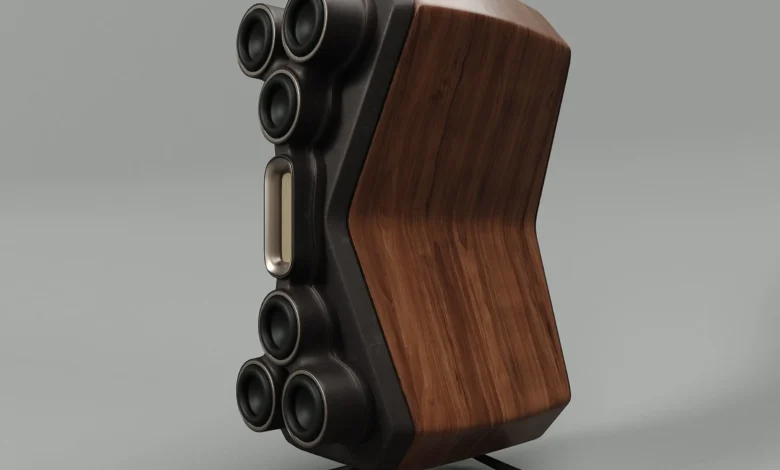

Many products are available in the market, and many baffle materials are used inside the enclosure to control sound reflections, reduce resonances, and improve overall sound clarity. Down Below I have listed some cheap and durable materials and techniques used for speaker baffling:
- Polyester Fiber Fill (Polyfill): This synthetic fiber is often used to reduce internal resonances and increase the perceived volume of the enclosure. It slows down air movement within the speaker, reducing boominess in bass frequencies.
- Acoustic Foam: This type of foam is designed to effectively absorb sound energy, especially mid- and high-frequency energy. It is typically applied to the inside walls of the enclosure. It helps to minimize internal reflections and control unwanted resonances.
- Fiberglass Insulation: Fiberglass is another effective option for baffling, especially for reducing internal standing waves and reflections. However, it should be used with care due to the potential health risks associated with handling fiberglass.
- Wool or Cotton Batting: These natural fibers can be used to absorb sound and add damping inside the enclosure. Wool, in particular, is known for its excellent damping properties and is often used in higher-end speakers.
- Dynamat or Sound-Deadening Material: Sound-deadening sheets like Dynamat can be applied to the interior walls to reduce cabinet resonance. This material is typically used in car audio applications but is also effective in home speakers.
- Open-Cell Foam (Egg Crate Foam): This type of foam is lightweight and works well to absorb high frequencies, reducing reflections within the enclosure.
- Felt or Carpet Padding: Used mainly for their sound absorption capabilities, felt or carpet padding can be affixed to the inner walls of the enclosure to reduce internal reflections and control unwanted resonance.
Each of these materials can help improve sound clarity by reducing distortions caused by internal reflections and resonances, ultimately creating a tighter, cleaner audio experience. Now I will tell you more details about how to improve your acoustics’ sound quality without unnecessary expenses. It will describe the most effective methods of acoustics improvement, which are easy to implement with your own hands. This can be called polishing which the manufacturer could not implement due to the feasibility of production and its payback.
How can a non oversampling DAC sound good? A Complete Guide
All instructions and tips from this article are suitable for any acoustic system with a phase inverter, including subwoofers and floor-standing speakers. Many tips are also suitable for other types of acoustic systems.
So let’s begin.
Covering the body with sound-absorbing material and strengthening the structure.
First, let’s find out for what purposes this procedure is performed.
The speaker’s body is a resonator, like in any other musical instrument. Vibrations transmitted from the emitter (speaker) diverge along the walls of the body. Colliding with each other, they create resonance, which consists of waves of different frequencies. These waves are called “parasitic” and refer to distortions of different frequencies, depending on the volume, material, thickness, and layout of the body.
Parasitic frequencies – greatly worsen the perception of the sound stage and the resulting sound is distorted, far from the original. In some cases, a certain frequency predominates over others, which can even be a little annoying (hum, for example), not to mention the fact that the sound path will not be reproduced correctly.
It is precisely to get rid of parasitic vibrations that the speaker body is lined with sound-absorbing material.
Before carrying out this procedure, you need to inspect the strength of the structure inside the case once again. After all, the less the case is subject to movement and vibration, the less parasitic frequencies will arise when one connecting part vibrates against another.
Opening the Speaker
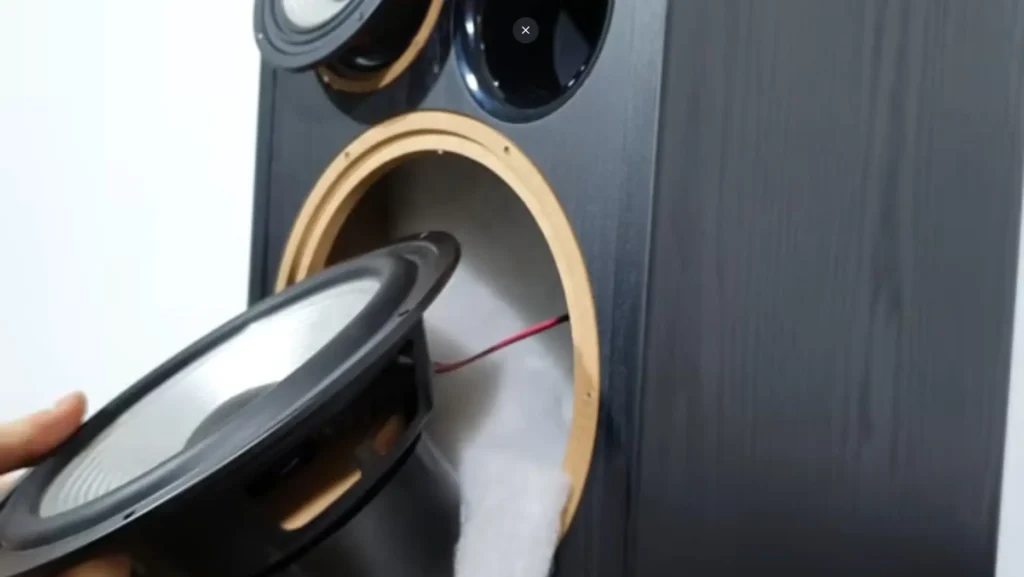

If this is an active speaker, then on the active speaker you need to unscrew the amplifier unit at the back, which is screwed on with screws.
The unit must be removed very carefully, without any sudden movements. If plugs come off, disconnect them and put the amplifier unit next to it, without tightening the wires. On passive speakers, you just need to unscrew the screws on the midrange speaker and carefully remove them without damaging the wires.
*All these operations must be carried out carefully and without sudden movements, to avoid damage to wires and circuits.
Strengthening the body.
This modification should be carried out if you doubt the strength of the structure of your acoustics and there are no additional rigidity structures inside the case (reinforcing strips, “plugs” on the walls, ties between the walls). Almost always, speakers need additional reinforcement.
For this procedure, you will need small 1×1 – 1×2 cm beams and rubber glue. We will glue the beams along the corners where there are no beams, which will strengthen the adhesion of the side walls to each other. We measure and cut, apply and estimate, and generously spread glue on the beam and the place to which it will be glued. We glued all the corners where the manufacturer saved wood. Naturally, we use the beams as spacers, and not just glue.
It is also worth laying beams along the long walls of the column if there are none. As shown in the picture, or diagonally. The beams should fit tightly along the edges.
It is also advisable to make horizontal spacers between the walls, this will significantly strengthen the structure. This is especially relevant for large speakers with long walls (for example, Microlab Solo 7 ).
After this procedure, we get a stronger structure that creates less resonance of the walls, as well as less vibrations during micro-friction and contact of the walls with each other.
Upholstered with sound-absorbing material.
*This is the most effective method, which will have a greater impact on improving the sound quality of your acoustics. Almost all Hi – End class acoustics use sound-absorbing material to absorb parasitic frequencies.
To carry out this procedure, we will need double-sided tape and sound-absorbing material.
For what purpose is this done?
All this action is carried out to reduce the reflection of sound waves from the body of the acoustics with a phase inverter. If this is not done, then often instead of bass, incomprehensible buzzing and whistling sounds will fly out of it. The upholstery gives a more even and balanced bass, which becomes softer and better distinguishable by ear. It removes buzzing, resonant sounds that occur in the body of the acoustics due to the collision of sound waves. This also allows you to slightly expand the lower range of reproduced frequencies.
The best materials to use as sound absorbers are synthetic winterizer ), felt, rolled cotton wool, or the most interesting material – cotton wool, sound-absorbing – like “ URSA ”, and it is also non-flammable. Just not insulating glass wool made of quartz sand, but homemade for installing partitions. If it is problematic to get these materials, as a last resort you can use rolled foam rubber, which can be found at any hardware store. But still, its use is highly undesirable. Do not forget that synthetic winterizer, felt, cotton wool must be fluffed up before gluing.(can be found at any clothing market, or can be found in an old jacket
First, we take out the sound-absorbing material that the manufacturer put inside, if there is any.
What we do.
- 1) We glue with double-sided tape as many areas inside the column as possible. Immediately peel off the protective paper.
- 2) Cut or stretch the sound-absorbing material so that the bare walls are completely covered, including (especially) the corners.
- 3) We line all the cavities with material so that the wooden walls are completely sealed. The layer thickness should be no more than 2 cm, otherwise, it can significantly reduce the volume inside the case, which will not have the best effect on the depth of the bass component.
Warning.
In places that get hot, it is better not to overdo it. This applies to places near the transformer and amplifier block. Between them and the sound-absorbing material, it is better to leave an empty space of 1-2 cm. Therefore, the best material is non-flammable sound-absorbing cotton wool such as ” URSA “, which, for example, may remain after repairs. It can be used without restrictions.
You need to try to secure the material as carefully as possible. After all, you don’t want the cotton wool or synthetic padding to jump around inside or, even worse, fly out of the phase inverter when there are large movements of air masses inside the case
Modification of the phase inverter.
To reduce rattling and possible whistling from the phase inverter, it is worth doing 2 things.
1. Wrap the phase inverter with sound-absorbing material, like a “fur coat” in one layer. Leave 1 cm of bare space at the end of the phase inverter. Tightly secure the “fur coat” with thin rubber bands, wrapping them around the phase inverter, as shown in the figure above.
2. Cut off any protective grilles inside the phase inverter pipe with nippers. They are of no use, but they create a lot of extra sounds and whistles. If there is a mesh glued to the end, it is also better to remove it. This will allow air to pass more easily, which will increase the overall reaction speed of the speaker.
Installing acoustics on spikes.
Try pressing the speaker for a while while playing music. You will hear that it will go out of tune and swallow a good half of the frequencies. This happens because the finger absorbs vibrations, preventing the speaker from releasing them into the air.
The speaker’s body is an extension of the speaker. When it comes into contact with the floor, table, shelf, or other objects, the speaker’s body transfers some of its vibrations to these objects, as in the example with the finger.
In order for the acoustics to transmit sound waves into the air efficiently, without physically scattering them on the floor and objects with which it come into contact, creating distortions, spikes are used.
The spikes are attached like legs. To do this, 4 small holes (not through holes) are drilled on the bottom wall, into which they are screwed. You can buy them in many consumer electronics stores where acoustics and accessories for them are sold, or order them online. Under the acoustics with spikes, there should be a hard material – ceramic tiles, parquet, or other. The main thing is that the legs have as little contact with it as possible and are not recessed.
The principle of action of the spikes is that they greatly reduce the area of contact of the speaker with the surface on which it stands. Due to this, the sound waves that are fed to the body begin to sound and do not fade away on the floor, parquet, or shelf. Distortions are reduced to a minimum, the bass component becomes more distinguishable by ear and much more detailed.
Important note.
Spikes make sense to use for acoustics with a decent weight and decent size. Spikes should be used mainly for floor acoustics weighing more than 12 kg. Or for subwoofers weighing 5 kg or more. In smaller acoustics, there will be an effect, but not as noticeable.
Replacing the wires on the amplifying part of the acoustics. For active acoustics.
Often, the manufacturer saves on such things as the quality of the wires from the crossover to the speaker and from the board to the crossover. Thickness, as well as the quality of the wire, directly affects the sound quality. The thicker the wire, the deeper the bass and the clearer the midrange. This modification should be carried out primarily on subwoofers, due to the greater energy that flows through these very wires.
1. Select a suitable replacement wire, naturally the highest quality copper available. Preferably not VVG (solid), since the signal changes when passing through such a wire. It is better to take a PVS (braided) core made of oxygen-free copper. Thicker is not always better, you need something in between, depending on the power of the speakers.
2. Unsolder and cut off the old wires. If there is a bracket on the other end, then if possible, solder the wires to the terminals on the board themselves. If this is not possible, cut the bracket off at the root, remove the terminals, solder the wires to them, and insert them back into the bracket. Also, wrap the speaker and crossover terminals and solder generously. Soldering is MANDATORY!
3. We make sure of the quality of the soldering.
It is also worth paying attention to the connecting wire between the speakers.
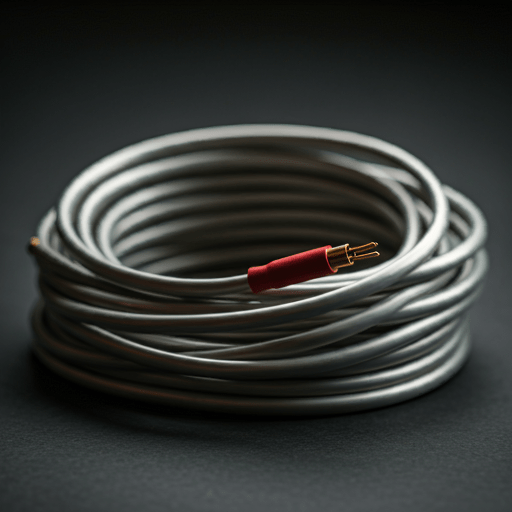

The manufacturer rarely slips in anything worthwhile. The best option from the most affordable ones is a braided wire with transparent insulation, which is supplied, for example, with SVEN Royal or Microlab SOLO 6 and higher.
A similar wire can also be purchased at electrical stores. This is an inexpensive option to replace the flimsy wires that come with the speakers. For floor-standing options, acoustic wires with a thicker cross-section and higher-quality, oxygen-free copper are best suited. These can be purchased at any store that sells home theaters, or at the electronics market.
A few words about the wires from the sound source to the speakers.
The wires that go from the sound source to the speakers (usually RCAs) or receiver must be of good quality.
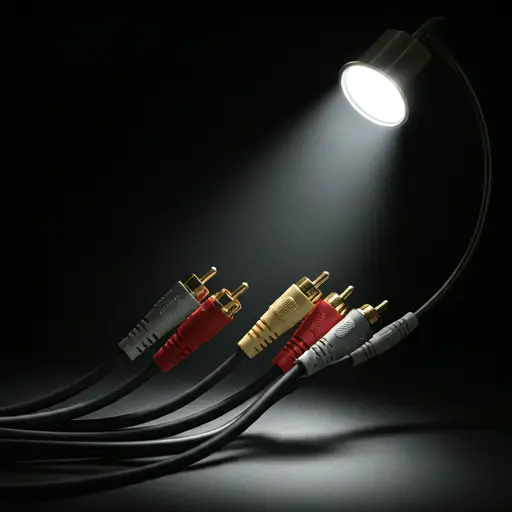

They should be shielded from interference from power lines, cellular networks, and radio. To do this, wire manufacturers wrap them in a layer of foil, or braid them with aluminum or copper thread. It is easy to distinguish them – they are much thicker than unshielded ones. Also, high-quality wires should have gold-plated plugs for lower resistance and lower signal loss on the plugs. You can buy such wires at the radio market or in stores that sell home theaters.
Note.
For the change of wires to have a noticeable effect, we recommend replacing them on acoustics with a price bar of $100 and above (for 2.0). Or, if the wire used by the manufacturer is really of poor quality.
Use surge protectors.
Good power filters, which are equipped with high-frequency suppressors, are quite good at removing so-called white noise and other interference caused by poor power supply and interference in the network.
Often, in the circuits of built-in amplifiers, there is no high-quality interference suppression circuit, which leads to distortions, noise from the speakers, and different sounds when the refrigerator starts working or the electric ignition of the gas stove at the neighbors
Remember that cheap filters will not save you from interference. They are capable of protecting equipment from pulse currents that occur, for example, when lightning strikes the wiring, and that’s all.
The filters we need should have a high-frequency interference suppressor (filter). They are also useful for receivers and amplifiers, both for protection and for better noise immunity.
Good filters are made by ZiS Pilot (starting with the GL series ), and APC.
If the speakers are humming or there is extraneous sound coming from them.
There are usually two reasons:
- Poor quality signal source or cable.
- Low-quality input capacitors in the built-in amplifier section (if the speakers are active).
In the first case, you need to check the cable, see if the connectors are fully inserted into the plugs, and check the integrity of the cables. You also need to move the wires away from others, especially from the power supply and radio cables, since they create magnetic fields around themselves.
In the second case, you need to open the speaker with the amplifier part. Usually, it is heavier and has a radiator.
Next, you need to find the capacitors of the power supply filtering circuit. Usually, there are two of them and they are the largest. They should be unsoldered and replaced with new, high-quality ones with a higher maximum voltage and capacity. It is also worth checking if the others have swelled or leaked (brown or yellow dried liquid nearby). If so, then replace them without hesitation.
You can also replace other large capacitors since they do not stand out for their quality in multimedia acoustics.
Other useful tips for improving the sound quality of your speakers without any modifications.
Correct placement of acoustics.
To achieve the highest possible sound quality, the speakers need to be correctly positioned around the room.
30% of success in achieving the correct sound picture depends on the correct placement of acoustics.
1. High-frequency speakers ( HF ) – should be at the same level as the listener’s ear for better positioning in space.
2. The phase inverter port should not be covered by anything. The distance from the wall or other obstacle should be more than 15 cm, so that low frequencies are not lost at the output and nothing prevents them from spreading around the room.
3. The front speakers should be positioned 30 degrees from the listener’s point of view and directed directly at him.
Rear, 30 degrees from the side point of the listener (from 90 degrees ) Only in this case is the best depth of the sound picture ensured.
4. The optimal distance at which the speakers should be located from the listener is 2 meters for floor-standing speakers and 1 meter for bookshelf speakers.
5. Eliminate extraneous sound sources. This could be an open window, a not-so-quiet system unit, etc. All these sounds interfere with the perception of sound and can even make excellent sounds indistinct and poorly detailed.
Conclusion.
Let’s repeat the steps:
Strengthen the Overall Structure: Reinforcing the cabinet’s structure can reduce unwanted vibrations, which muddy sound quality. Bracing inside the cabinet, using denser materials, or adding dampening layers can minimize resonances and enhance sound clarity.
Cover the Body with Sound-Absorbing Material Inside: Applying materials like acoustic foam, fiberfill, or wool inside the cabinet can absorb stray sound waves, reducing internal reflections and minimizing distortion. This approach can also enhance bass response and produce a more accurate soundstage.
Improve the Phase Inverter (Port): Optimizing the design and position of the bass reflex port or phase inverter can help control airflow more efficiently, reducing chuffing (port noise) and improving bass extension. A well-designed port allows for a deeper, more controlled bass without distortion.
Install the Speakers on Spikes: Placing speakers on spikes (or isolation feet) minimizes surface contact with the floor, reducing vibrations that can affect sound clarity and detail. This helps to isolate the speaker’s vibrations from the floor and reduces resonance, which can improve imaging and detail.
Replace Internal and External Wires with High-Quality Ones: Upgrading internal cabling and external speaker wires to high-quality, well-shielded cables can improve signal transmission. Connecting everything through a good power filter can reduce electrical interference, leading to clearer and more accurate sound reproduction.
Position Speakers Correctly and Eliminate Noise Sources: Proper speaker placement on walls, furniture, and listening position is essential for achieving a balanced soundstage and clear imaging. Reducing room noise and placing sound-absorbing materials around the room can help enhance audio fidelity.
Listen and Fine-Tune: After implementing these upgrades, take time to evaluate the sound. Adjust speaker position, isolation, and other elements if needed to fine-tune the audio to your preference.
Each of these steps targets specific areas of sound quality, helping create a more refined, accurate, and immersive listening experience.
Create and be amazed at how the sound changes for the better. If you need any further help please let us know in the comment section below.


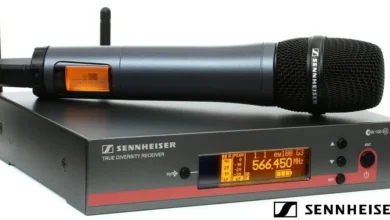

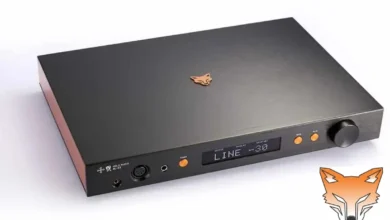
GIPHY App Key not set. Please check settings